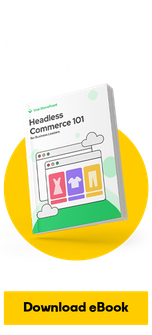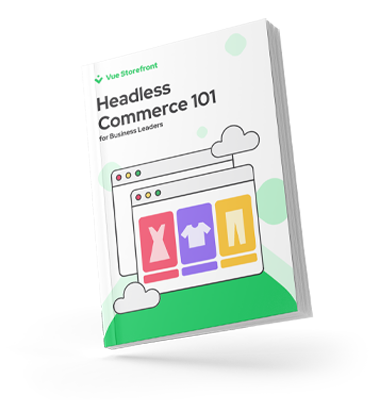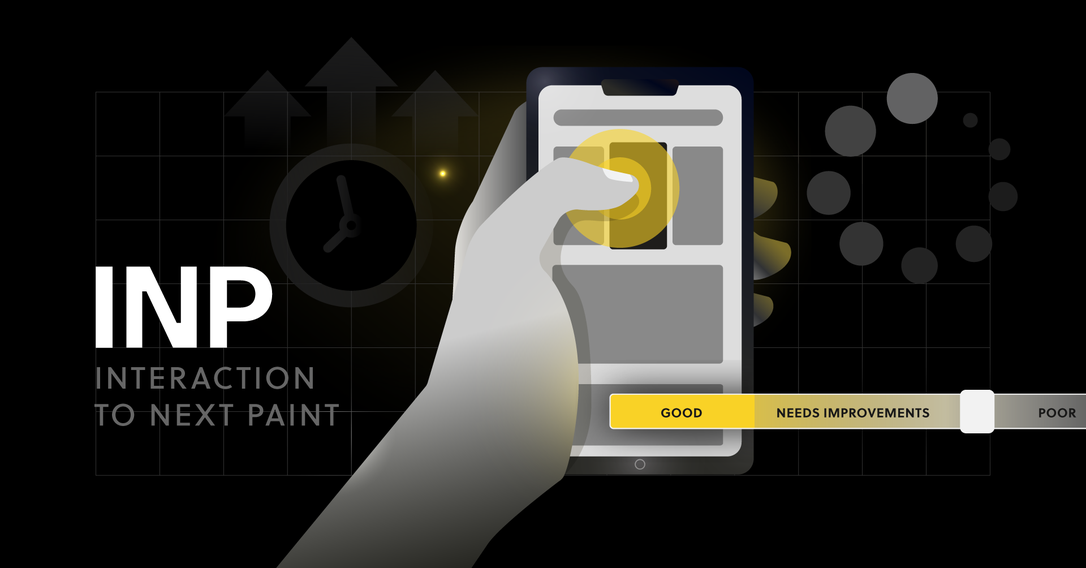10 min
August 12, 2025
Headless CMS vs. Traditional CMS
Content Management Systems (CMS) have been around for over 20 years. However, the term "headless CMS" has only recently become common in this ecosystem.
While a traditional CMS architecture was once the standard approach, the amount of content being published has dramatically increased. As content becomes richer, more innovative, and encompasses new formats, organizations are now seeking modern solutions. These should offer greater agility and flexibility.
These expectations have placed new demands on digital content management, and leading website developers are choosing headless CMS. However, many specialists ask: headless CMS vs. traditional CMS - what's the difference?
Listen to the audio version of this article.
What is a traditional CMS?
A traditional CMS is a monolithic content delivery system. It consists of a connected back-end and front-end that work together to power a website. The back-end is built with a database containing code and plugins. The front-end uses themes, templates, and CSS to display content to end-users.
Every online store model consists of three basic elements:
A database that stores product data, such as prices, names, descriptions, and photos.
The back-end, which is the internal part of the system that supports and allows management of all store functions.
The front-end, which is the presentation layer of the system that displays processed information from the database to the end-user, e.g., the store customer.
The traditional CMS model, e.g., WordPress, assumes a tight connection between the front-end and the back-end. This allows for managing the entire site in one place, simultaneously interfering with the front-end, back-end, and database layers.
But this is also one of its biggest drawbacks. A traditional CMS is often full of legacy code that is tightly coupled and intertwined. This, in turn, slows down website performance.
Why Do Users Stick with Traditional CMSs?
Traditional CMSs are part of so-called monolithic systems or coupled solutions. They provide a complete set of functionalities for both content creation and its presentation. Therefore, they have a strictly defined set of technologies that can be used to prepare the presentation layer. A classic example is WordPress – websites are created using graphic templates and a database.
That's why a traditional CMS solution is a good choice for companies that operate in only one channel. For example, solely within a website.
For simple websites, such as personal pages and blogs, the templates provided by a regular CMS are likely sufficient, so there's no real benefit to using a headless solution.
Why Traditional CMS No Longer Provides a Competitive Advantage?
WordPress is used by over 40% of all websites and has proven to be a reliable solution for many publishing tasks. But its outdated codebase and old architecture do not make WordPress an ideal platform.
Changes are often introduced that make the system more complicated with each new version. Especially regarding the user interface, it's not always easy to get WordPress to have any desired look and branding, due to predefined templates.
Its themes are still built in PHP, while the rest of the web is increasingly transitioning to JavaScript. This means that using additional plugins can become problematic.
That's why it's time to jump aboard the headless train
What is headless CMS?
A Headless CMS is a content management system where the frontend and backend are decoupled. The CMS is "headless" in the sense that content created within such a solution can be published on any channel, using any frontend layer. A headless CMS can be thought of as a kind of content repository designed for any interface (used by users) connected via an API.
A headless CMS is a solution that adequately responds to increasingly complex content management processes. With the growing number of customer touchpoints with a brand, it has become justified to enable content reuse.
Because marketers want to publish the same content across various channels of the communication funnel, they need a convenient tool to do so. Traditional CMSs are unable to meet such demands. For a very simple reason – they were developed and adapted to completely different circumstances and conditions.
Fast Omnichannel Service. Ditch the "Head" and Change Your Communication
A Headless Content Management System allows you to manage content across a wide spectrum from a single panel, which is extremely important in increasingly user-centric omnichannel sales.
Separating the presentation layer from the content allows for publishing content on any device or across different channels. This could be a website, a smartphone, a smartwatch, or other internet-connected devices (Internet of Things - IoT).
Content displayed on each device can be customized independently, and UI updates do not require changes to the application's backend.
This allows for incredible flexibility and expands possibilities when implementing new, innovative solutions. What's more, a headless CMS perfectly integrates with PWA / TWA applications, which are currently conquering the e-commerce market.
Main Benefits of Using a Headless CMS
A Headless CMS is an ideal solution for companies where content is an important factor. They offer an incredibly user-friendly editor and provide a seamless experience. As mentioned earlier, they also allow for instant content distribution to various channels. This helps avoid content duplication and simplifies content management.
What are headless CMS's other advantages?
Compatibility. Allows you to publish content on any device and across multiple channels simultaneously, and the user experience is fast, consistent, and responsive.
Scalable. Because the front-end and back-end are separate, you can customize and upgrade your site without losing performance.
Exceptionally Secure. Since the headless CMS is not accessed from the CMS database, the risk of DDoS attacks significantly decreases.
Excellent for Teamwork. Front-end developers are free from back-end constraints and can use their favorite libraries and frameworks, while marketers can configure content without developer assistance.
Traditional CMS vs. Headless CMS - What are the Key Differences?
A Traditional CMS (e.g., WordPress) consists of:
a database (where content is stored),
a management console, used for content management,
a visual layer that displays information from the database using frontend technologies, and a page rendering engine that connects these three elements.
In a Headless CMS, the frontend is separated from the backend, so it only has:
a database for storing content, and an API with HTTP query access
an administrative interface
This is the main point when comparing Traditional CMS vs. Headless CMS.
It makes the visual layer independent of the data, so changes to content will not change the appearance of the page. Using traditional CMSs comes with limitations related to the technologies you use to create components. With a headless CMS, the above obstacle disappears.
An API is used to send content, through which content reaches devices without templates, unlike traditional CMS systems. This allows developers to create individual templates for each channel and are not limited to predefined templates, which allows for individual branding.
Content is entered only once and displayed on a website, online store, smartphone, smartwatch, or other device. Content specialists can work independently of developers and without specialized programming knowledge. Thanks to special administration panels, they can enter, edit, and modify the flow for various channels.
Why Should You Switch to a Headless CMS?
You already know the differences between headless vs. traditional CMS. Let's explore when it's worth considering a headless solution.
Content Hub Independence
By separating the visual layer from the data layer, you're not tied to the e-commerce backend. This gives you a dedicated space to create and edit content. It's a very future-proof solution because the backend can change every few years. By operating with a headless commerce approach, you ensure your content functions independently of other e-commerce elements.
Use the Same Content Across Multiple Devices
If you want to use the same content, such as a product description, across multiple devices, a headless CMS is designed for this. The backend of a headless CMS primarily focuses on data storage. This means that content entered into the administrative panel can be used on multiple devices and channels simultaneously.
This allows a given article or information about a specific product or service to be utilized across various channels. We're talking about a website, a product page in an online store, a blog, or a mobile application. By managing content from a single location (the CMS), you can quickly make updates regardless of where it's been used and add new devices where that content will appear.
In this way, the CMS becomes not just a hub for content management, but also serves as its storage facility.
Specialized Tool
Specialized tools are significantly better and more useful than CMSs built into all-in-one e-commerce solutions. Unlike those, headless CMSs typically allow for advanced workflows, meaning one person creates text, another reviews it, a third approves it, and then it's published.
They also include features like schedules, which allow you to plan automatic publications.
Expand Your Business Without Limits
A traditional CMS carries the risk of stifling business growth because it's not adapted for omnichannel sales. When it comes to expansion, you'll quickly realize that an old-fashioned CMS can't integrate new platforms, channels, or projects, which will hinder your ability to scale your business.
A Headless CMS is designed for those who want to grow their business. Whether you aim to enter new markets with multilingual support, launch additional websites or applications, or even expand your marketing materials, you can do it with this system. It serves as a central hub for all your content and acts as a platform for bringing your ideas to life.
Flexibility in Technology Choice
With headless content management systems, there are no limitations on the technology you use to create predefined components—the visual elements of your site.
These CMSs give you complete freedom in designing the visual layer. This is particularly important because some channels your company uses rely on different technologies, and some functionalities utilize modern frameworks. This guarantees the creation of an attractive website that aligns with the latest trends.
Distinguishing Between Content Management and CMS System Appearance
Another advantage of using a headless CMS is that changes to content don't alter the site's appearance. This means you don't have to worry about breaking anything on the frontend.
Stress-free work related to content redesign is incredibly important, especially when implementing entirely new projects where all content is created from scratch.
If the backend and administrative panel are already set up, you can start adding content at the preliminary stage of website preparation. The same applies to introducing functional corrections.
Which Headless CMS is Best for eCommerce?
For eCommerce websites, you'll likely need to combine and unify multiple tools and applications to create content for your long-term goals. That's why it's so important to choose the ideal headless CMS for your specific case after looking at all available options.
Below are three examples of headless CMSs. All of them integrate with Vue Storefront to guarantee a seamless flow of information between your chosen headless CMS and the frontend layer of your eCommerce site.
Storyblok
Storyblok is a headless CMS with a visual editor for developers, marketers, and content editors. It offers an easy-to-use page builder backed by modern headless architecture.
Storyblok will help your team tell a story and manage content for every use case: enterprise websites, e-commerce, help desks, mobile apps, and digital screens.
Contentstack
It speeds up and simplifies content management across various digital channels, including web, mobile, and IoT devices.
It allows developers and content managers to create and manage content simultaneously and independently, which accelerates development processes.
Bloomreach
In its CMS, Bloomreach provides an API-first experience solution that works seamlessly with headless commerce platforms.
Working across multiple channels is very easy and smooth. You can enrich every touchpoint with a product showcase, product grid, or recommendation widget.
Original author: Agata Czapla




